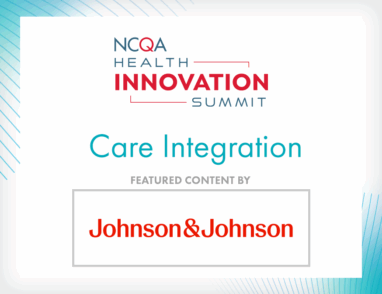A Practical Guide to Getting Started With Digital Quality Measures
October 22, 2025 · Guest Contributor
By Rich Almeida, VP Product Strategy & Compliance, Firely
The shift to digital-first quality measurement is underway. To stay in compliance and competitive, organizations must start preparing now.
Traditional HEDIS® relied on manual chart reviews and retrospective data collection, but this caused delays, inconsistencies and heavy administrative burden. NCQA is transitioning HEDIS reporting to FHIR®-based digital quality measures that change the game, offering real-time reporting, greater accuracy and smarter insights for payers and providers. This is an opportunity to modernize infrastructure, streamline workflows and improve care quality.
The path forward can be complex. This blog offers a practical starting point for organizations ready to move beyond the basics and build a scalable, future-ready digital quality strategy.
The Eight FHIR Resources in Every Digital Quality Measure
To calculate quality measures digitally, you need structured, standardized data—and that starts with FHIR resources. Most digital measures rely on the same eight core FHIR resources. Prioritizing them during implementation simplifies adoption, ensures data readiness and helps align internal workflows for long-term interoperability.
- The individual receiving care.
- Interaction with the health care system (e.g., office visit).
- Lab results, vital signs, screenings.
- Clinical interventions (e.g., colorectal cancer screening).
- Submitted charges for services.
- Adjudicated claim outcomes.
- Health insurance and plan information.
- Results of the quality measure execution.
Five Practical Tips to Help You Get Started
For many organizations, the journey begins with a single question: Where do we start? Based on lessons from early adopters, here are five essential tips:
- Engage stakeholders early. The shift to digital quality measures impacts multiple departments—from compliance and IT to clinicians and leadership. Early stakeholder involvement ensures shared goals, clarifies priorities and helps avoid misalignment between technical implementation and strategic outcomes.
- Identify a cross-functional team. No single department can deliver digital quality. Build a team that blends clinical, data and technology expertise, and ensure collaboration across these groups to drive adoption.
- Embrace testing and feedback. Start by validating how current data maps to required FHIR resources, and assess how well your systems support automation and logic execution. Then test, refine and incorporate feedback regularly before scaling to avoid large-scale rework down the line.
- Start small, then scale. A focused pilot builds momentum and reduces risk. Learn quickly, adapt and use early wins to guide broader implementation.
- Analyze and improve. Every step in the process offers valuable insights about data quality, internal readiness, tooling gaps and more. Build in time to review results, identify gaps, incorporate team feedback and refine a strategy before scaling.
What a Realistic Proof of Concept Looks Like
The first proof of concept (PoC) sets the stage for everything that follows.
Start with 1–2 measures. Select one or two digital quality measures that are clearly defined, well understood and relevant to organizational goals. This lets teams gain hands-on experience without being overwhelmed by complexity, and makes validation easier and faster.
Assess data readiness and gaps. Take stock of available data: where it lives, how complete it is, whether it’s structured in a way that aligns with FHIR resource requirements. Identify data gaps—missing fields, inconsistent coding, structural issues—early, so data can be cleaned up, completed or reorganized to meet FHIR requirements.
FHIR-enable legacy systems. No need to start from scratch! Consider extending existing infrastructure to expose the necessary data as FHIR resources using adapters, APIs or middle-layer tooling, where appropriate. This can help enable interoperability without major system overhauls.
Test for scalability. Once the PoC is operational, assess how easily it can be scaled. Can it support more measures, larger patient populations, additional teams? Evaluating performance while increasing demand helps determine whether an approach will work beyond the pilot phase.
Plan for integration. Think ahead about how measure outputs will be consumed. Will they feed into clinical dashboards, external regulators (e.g., NCQA) or performance management systems? A PoC should demonstrate not just data capture, but also how results will support real-world decisions across the organization.
Building for the Future
Digital quality measurement is no longer a future concept—it’s already underway. By taking clear, incremental steps now, organizations can stay ahead of compliance mandates while modernizing care delivery, reducing reporting burden and delivering real-time insights.
Getting started is about more than technology; it’s about building confidence, alignment and trust in a new way of working. Start small, scale smart and focus on the bigger picture: better care, better outcomes and a stronger foundation for value-based care.
This blog is brought to you by Firely and the views expressed are solely those of the sponsor.
HEDIS® is a registered trademark of the National Committee for Quality Assurance (NCQA).
HL7® and FHIR® are the registered trademarks of Health Level Seven International and their use does not constitute endorsement by HL7.







